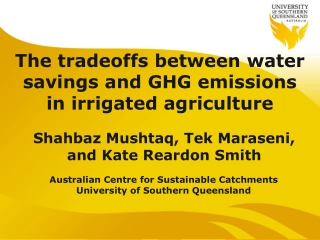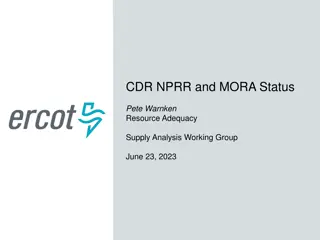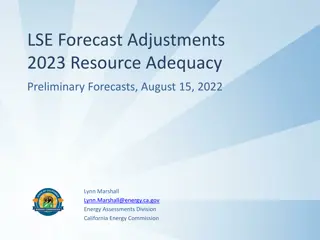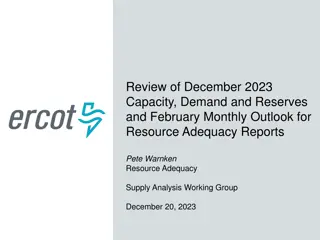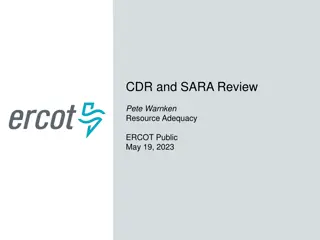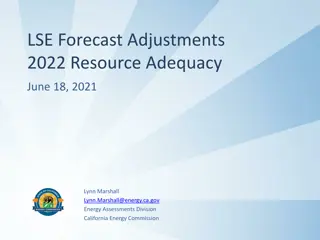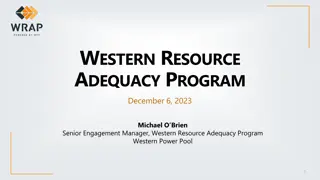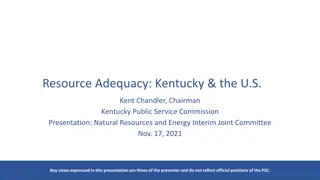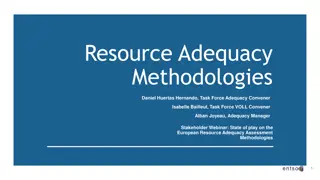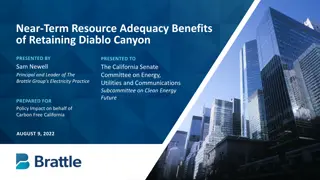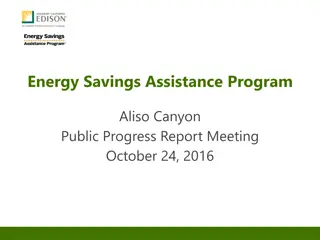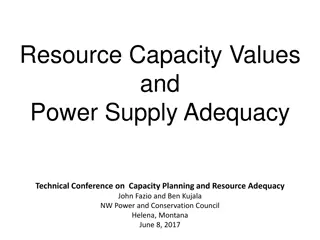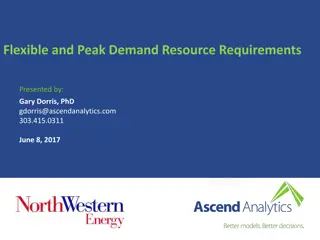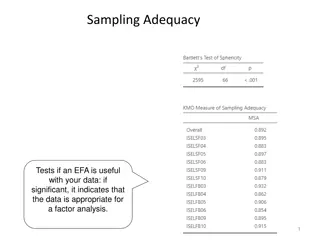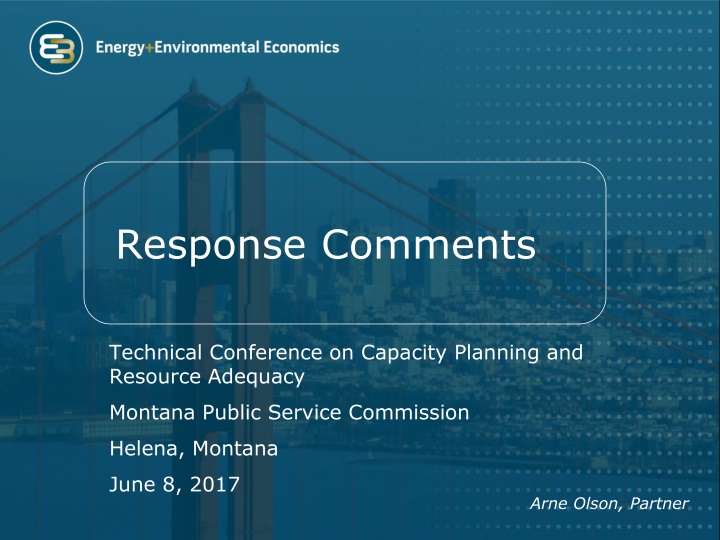
Regional Resource Adequacy Savings Analysis
Explore potential savings from regional resource adequacy efforts in the Northwest and Southwest areas, detailing reductions in peak loads and resulting cost savings. The analysis considers individual utility and regional peaks, highlighting the benefits of coordination for efficiency and economic value.
Download Presentation

Please find below an Image/Link to download the presentation.
The content on the website is provided AS IS for your information and personal use only. It may not be sold, licensed, or shared on other websites without obtaining consent from the author. If you encounter any issues during the download, it is possible that the publisher has removed the file from their server.
You are allowed to download the files provided on this website for personal or commercial use, subject to the condition that they are used lawfully. All files are the property of their respective owners.
The content on the website is provided AS IS for your information and personal use only. It may not be sold, licensed, or shared on other websites without obtaining consent from the author.
E N D
Presentation Transcript
Response Comments Technical Conference on Capacity Planning and Resource Adequacy Montana Public Service Commission Helena, Montana June 8, 2017 Arne Olson, Partner
High level comments on Power Council Presentation Benefits of hydro/gas/wind coordination are real John did the math right! Very difficult to get these synergies without regional coordination Bonneville is not going to build the wind or the gas Effective MW are lower if calculations are done alone Potential for tens or even hundreds of million in annual savings from regional resource adequacy Energy efficiency that contributes to peak has higher value Region appears to need new resources in 2021-2022 not clear whether replacements will be built in time Value of lost load: intuitive to bend the demand curve, however VOLL is not well understood 2
Average vs. Marginal Capacity Value The portfolio capacity value is the most relevant calculation to consider in resource planning Individual Solar Capacity Value Individual Wind Capacity Value Combined Capacity Value Due to the complementarity of different resources the portfolio value will be higher than the sum of each individual resource measured alone It is sometimes necessary to attribute the capacity value of the portfolio to individual resources There are many options, but no standard or rigorous way to do this The marginal capacity value, given the existing portfolio, is more appropriate for use in procurement This value will change over time as the portfolio changes 3
What are the potential savings from regional resource adequacy? Northwest Southwest BPA Area NWPP AZ-NM-NV WestConnect Individual Utility Peak + 15% PRM 33,574 46,398 35,459 57,270 Regional Peak + 15% PRM 32,833 42,896 34,474 54,597 Reduction (MW) 741 3,502 985 2,673 Savings ($MM/year) $89 $420 $118 $321 Regional Peak + 12% 31,977 41,777 33,575 53,173 Reduction (MW) 1,597 4,621 1,884 4,097 Savings ($MM/Year $192 $555 $226 $492 Calculated based on hourly loads from 2006-2012 Assumes capacity cost of $120/kW-yr. Assumes no transmission constraints Some savings already being achieved 4
High level comments on NWE presentation Someone will need to build capacity to meet the regional needs NWE is probably the most vulnerable of NW utilities to shortage conditions If the flexible capacity cost premium is high, NWE could investigate dispatch of wind to help reduce flexibility needs Cost of compensated curtailment compared against cost premium of flexible capacity Pre-curtailment can preserve resources to provide inc resource Wind and solar can be placed on AGC 5
Things I forgot to say Firm resources need firm fuel supply For gas resources, firm transportation contracts or dual- fueling capability 6
Thank You! Energy and Environmental Economics, Inc. (E3) 101 Montgomery Street, Suite 1600 San Francisco, CA 94104 Tel 415-391-5100 Web http://www.ethree.com Arne Olson, Partner (arne@ethree.com)

